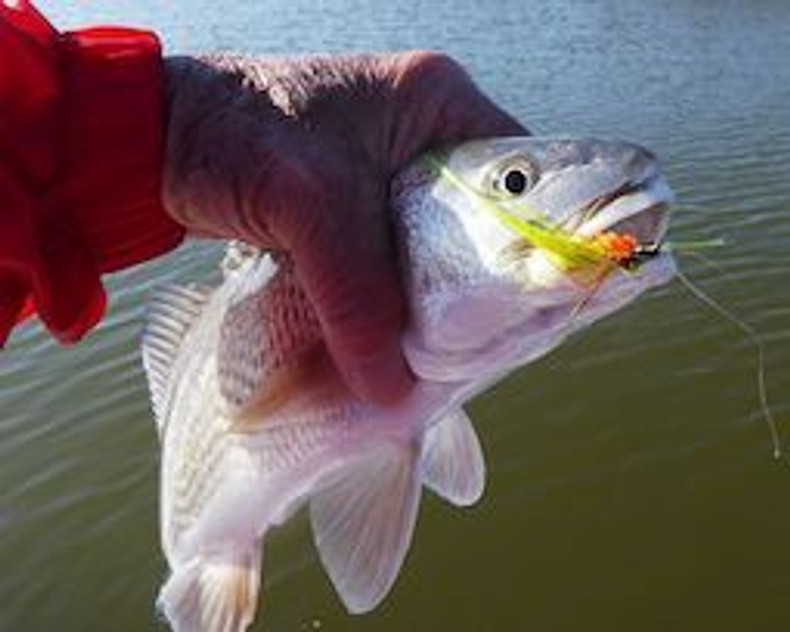GBFS Fly fishing for Redfish by Ed Mashburn
For anglers who spend most of their time fly fishing in freshwater, taking a little trip to the big salty water to catch redfish on the long rod represents a very special kind of fishing that is easily in reach. Fishing for redfish is not a difficult thing to do, and it’s not a major trip to find them. In fact, a great redfish trip can be easily combined with a family vacation.
Redfish are the most popular and highly regarded saltwater gamefish that are found in our southern and eastern coastal waters, and fly rod anglers can often use their present freshwater set ups to catch these wonderful fish.
 Where to Go
Where to Go
Redfish should be called “America’s Saltwater Game Fish” because they are found in coastal waters from Maryland and the Chesapeake all the way around both coasts of Florida to the redfish capital of the world- Louisiana. Texas has a fine population of reds in coastal waters also.
For example, an angler in the Midwest- let’s say St. Louis- can load up and drive south for eight or ten hours- traffic in Memphis will dictate how long the trip takes- and be on the Gulf Coast right in the middle of redfish territory. It’s a trip I’ve made dozens of times.
Although reds can be caught from shore, fishing from small boats in bayous and creeks and behind barrier islands is much more productive. Kayaks and other paddle craft are great boats for coastal redfish fly fishing. For first-time anglers, hiring a guide who specializes in fly fishing is a very good idea.
Fishing for reds is really very much like fishing for freshwater bass. Look for structure, look for current, and look for concentrations of baitfish- the reds will be there. And reds will eagerly take the same flies that bass find attractive.

How to Rig
We’ve caught redfish on fly rod gear that ranged from four-weight- these are a blast when fishing for little mini-reds in small canals and creeks- to ten and twelve-weight mega-rigs when fishing for thirty pound and larger bull reds. However, a fly rod that is too light- say a three or even four weight- will not result in a good experience if a big red is hooked. A ten-pound red will not treat a too-light fly rig with much respect.
Fly anglers can reasonably expect success with a seven or eight weight rig. A major consideration for fly anglers is to have a reel that has a good drag and at least 100 yards of heavy backing line. Reds will make long and powerful runs when hooked, and backing line is necessary.
Leaders will need to be stepped up from common freshwater levels. A 25 lb. section of butt connected to a section of 15 lb. leader will work fine for most redfish situations. The reds are not very leader-shy, so super-long leaders are not required. A nine-foot-long leader works well.
Reds will take just about any fly that bass will take. Simple light-colored streamers work very well. Reds will absolutely rise to topwater flies- poppers are very effective, but they often miss on the first strike.What to Expect
Even though redfish and freshwater bass see the world through much the same eyes when it comes to what they will eat, once a redfish strikes, most fly anglers are surprised at the strength and power of these bronze-colored bruisers. Redfish don’t jump, but they do pull- and they keep pulling. Reds will quite often make two or even three or four long, strong runs, and fly anglers will need to keep the line tight and be cautious to not high stick a big red. These powerful fish are quite capable of breaking fly rod tips if the angler puts too much pressure on the tip of the rod.
But when an angler hooks and lands a nice redfish and those bronze sides and copper fins slash in the sun, it’s a high point in most angling experiences.And one last bit of advice: when the day is over, be sure to rinse that reel and line off in freshwater- the salt water is very hard on reels that aren’t properly cleaned.

